Mengxi Tan
Maximizing the performance for microcomb based microwave photonic transversal signal processors
Sep 10, 2023Abstract:Microwave photonic (MWP) transversal signal processors offer a compelling solution for realizing versatile high-speed information processing by combining the advantages of reconfigurable electrical digital signal processing and high-bandwidth photonic processing. With the capability of generating a number of discrete wavelengths from micro-scale resonators, optical microcombs are powerful multi-wavelength sources for implementing MWP transversal signal processors with significantly reduced size, power consumption, and complexity. By using microcomb-based MWP transversal signal processors, a diverse range of signal processing functions have been demonstrated recently. In this paper, we provide a detailed analysis for the processing inaccuracy that is induced by the imperfect response of experimental components. First, we investigate the errors arising from different sources including imperfections in the microcombs, the chirp of electro-optic modulators, chromatic dispersion of the dispersive module, shaping errors of the optical spectral shapers, and noise of the photodetector. Next, we provide a global picture quantifying the impact of different error sources on the overall system performance. Finally, we introduce feedback control to compensate the errors caused by experimental imperfections and achieve significantly improved accuracy. These results provide a guide for optimizing the accuracy of microcomb-based MWP transversal signal processors.
* 15 pages, 12 figures, 60 references
Photonic single perceptron at Giga-OP/s speeds with Kerr microcombs for scalable optical neural networks
May 12, 2021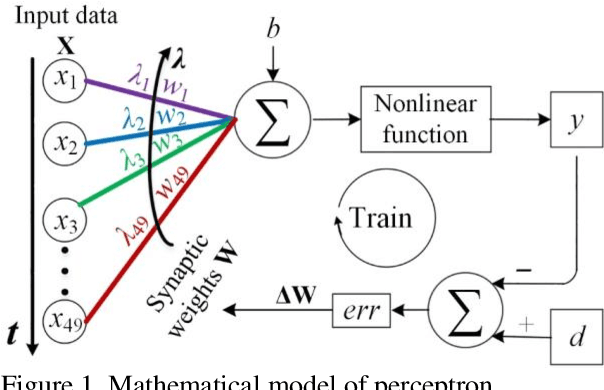
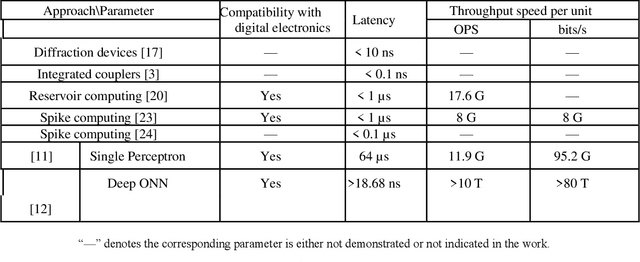
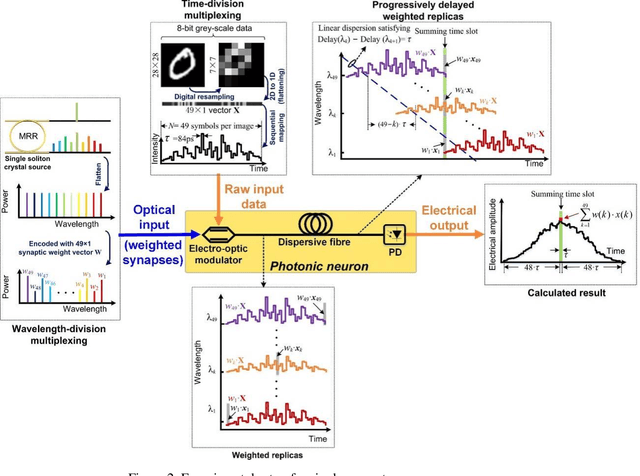
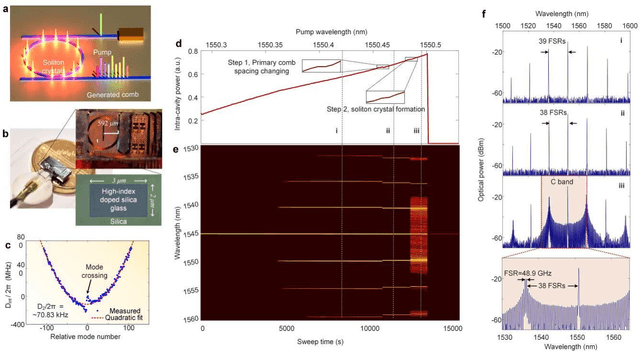
Abstract:Optical artificial neural networks (ONNs) have significant potential for ultra-high computing speed and energy efficiency. We report a novel approach to ONNs that uses integrated Kerr optical microcombs. This approach is programmable and scalable and is capable of reaching ultrahigh speeds. We demonstrate the basic building block ONNs, a single neuron perceptron, by mapping synapses onto 49 wavelengths to achieve an operating speed of 11.9 x 109 operations per second, or GigaOPS, at 8 bits per operation, which equates to 95.2 gigabits/s (Gbps). We test the perceptron on handwritten digit recognition and cancer cell detection, achieving over 90% and 85% accuracy, respectively. By scaling the perceptron to a deep learning network using off the shelf telecom technology we can achieve high throughput operation for matrix multiplication for real-time massive data processing.
* 14 pages, 8 figures, 107 references. arXiv admin note: substantial text overlap with arXiv:2101.12356
11 TeraFLOPs per second photonic convolutional accelerator for deep learning optical neural networks
Nov 14, 2020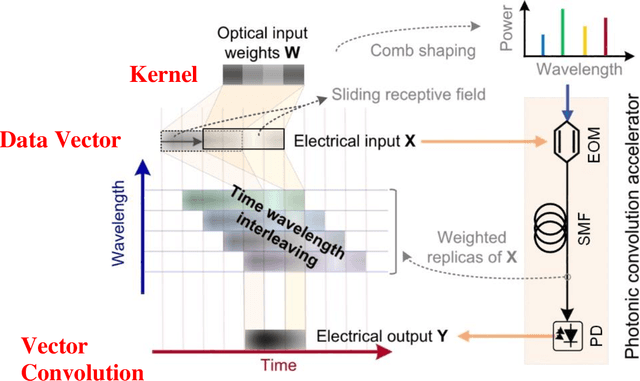
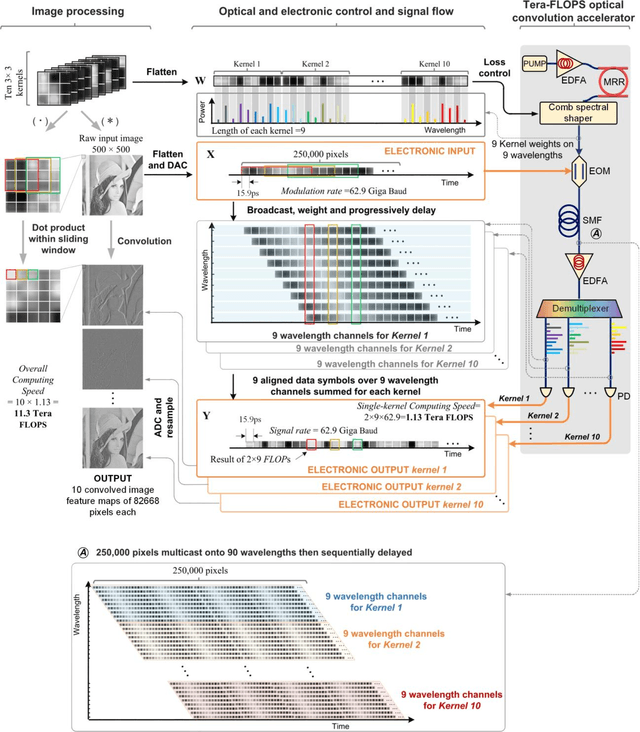
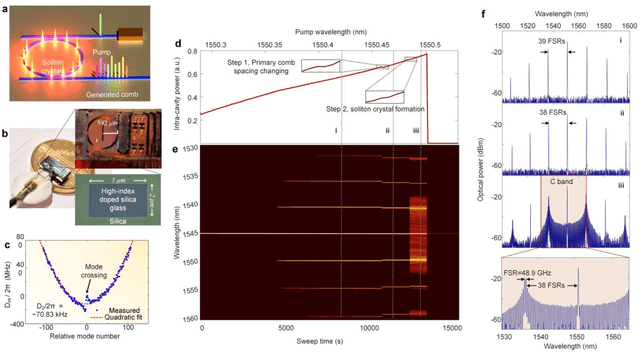
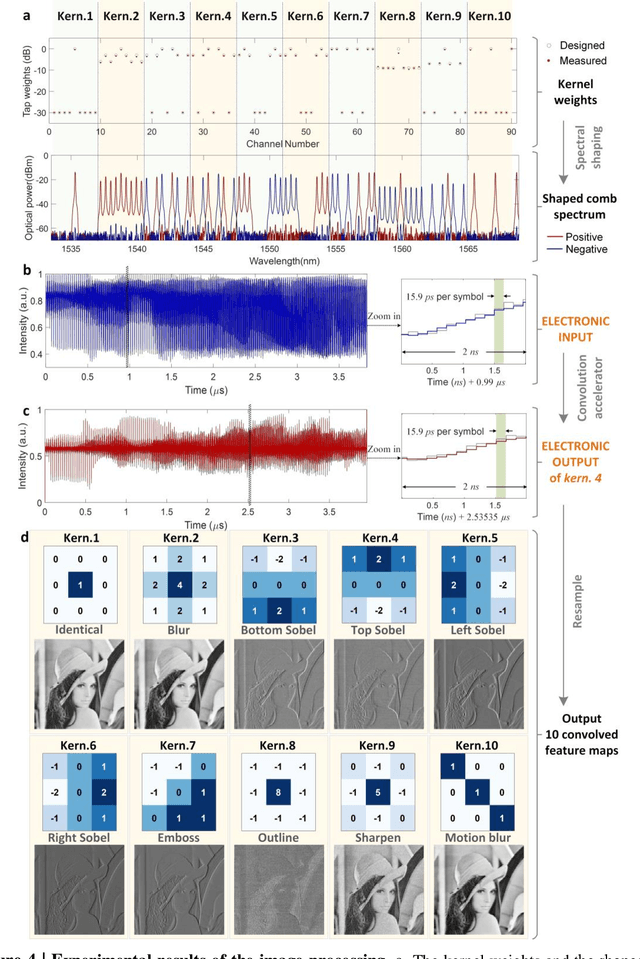
Abstract:Convolutional neural networks (CNNs), inspired by biological visual cortex systems, are a powerful category of artificial neural networks that can extract the hierarchical features of raw data to greatly reduce the network parametric complexity and enhance the predicting accuracy. They are of significant interest for machine learning tasks such as computer vision, speech recognition, playing board games and medical diagnosis. Optical neural networks offer the promise of dramatically accelerating computing speed to overcome the inherent bandwidth bottleneck of electronics. Here, we demonstrate a universal optical vector convolutional accelerator operating beyond 10 TeraFLOPS (floating point operations per second), generating convolutions of images of 250,000 pixels with 8 bit resolution for 10 kernels simultaneously, enough for facial image recognition. We then use the same hardware to sequentially form a deep optical CNN with ten output neurons, achieving successful recognition of full 10 digits with 900 pixel handwritten digit images with 88% accuracy. Our results are based on simultaneously interleaving temporal, wavelength and spatial dimensions enabled by an integrated microcomb source. This approach is scalable and trainable to much more complex networks for demanding applications such as unmanned vehicle and real-time video recognition.
 Add to Chrome
Add to Chrome Add to Firefox
Add to Firefox Add to Edge
Add to Edge